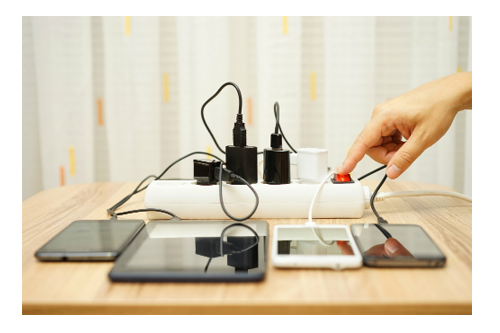Ah, the Digital Age. We have gadgets galore, the ability to manage our homes in new innovative ways, brilliant images and captivating sounds of modern entertainment options and of course, the internet. Clearly, digital devices reign supreme. Yet these cool new capabilities come with a couple of pitfalls; vampire loads and the issue of "technology reincarnation."
Over the course of the Digital Age, electricity use has continued to increase. Families have multiple televisions. Computer prices have plummeted, meaning many homes now have multiple computers. Everyone in the family has a cell phone. Gaming consoles and set top cable/satellite boxes satisfy our desire for entertainment.
Major appliances aside, most digital devices do not use 120-volt power, which is the standard voltage of a home outlet. They actually use a lot less. So, trying to plug your brand new smartphone directly into an outlet is going to lead to a fried device and lots of tears from someone. This is why low-voltage devices come with a power adapter. These "wall warts" as some call them, take the 120-volt electricity supplied by your local rural electric utility and convert it to say, five volts. Unfortunately, most folks leave their adapters plugged in to make recharging easier. The problem with this approach is that the adapter sometimes uses power even when it isn't charging a device.
This invisible energy consumption is often called "vampire load." Studies have shown that 5 to 10 percent of the average home's energy use can come from vampire loads. The only way to stop this is to unplug the power adapter when it is not in use or employ smart power strips. These look like the typical power strip but with a twist-only one socket gets power all the time. When the device or appliance connected to it turns on and starts using power, the remaining sockets receive power too. This is perfect for entertainment systems, computer set ups and a variety of other situations. Technological advances have steadily increased energy efficiency and reduced purchase prices. On its face, this seems like a good thing. Unfortunately, when replacing a product at the end of its life, the tendency is to go bigger, or continue to use the old tech. This is the second issue I noted — technology reincarnation.
Technological advances have steadily increased energy efficiency and reduced purchase prices. On its face, this seems like a good thing. Unfortunately, when replacing a product at the end of its life, the tendency is to go bigger, or continue to use the old tech. This is the second issue I noted — technology reincarnation.
For example, flat screen television prices have plummeted — and so has the amount of electricity they use. Consumers wander into the big box store and are dazzled by walls of giant, brilliant televisions. What they used to pay for the paltry 32" model now might net them a 50" giant. And who doesn't want to see their favorite show or sports event in near life size? But if you spring for the bigger TV, you won't benefit from the increased energy efficiency of the newer technology. The bigger model uses as much juice as the older, smaller TV, which likely ends up in another room (reincarnated in another setting) still using power.
Or refrigerators. These are the showpieces of the evolution of smart appliances. Many new models include touchscreens and cameras; they communicate over the internet and probably even keep food cold and make ice. Yet what often happens is the old refrigerator ends up in the basement or garage, reincarnated as a dedicated beverage unit or overflow.
I'll offer a couple words of advice to help you avoid-or at least reduce the effects of vampire loads and technology reincarnation. Invest in smart power strips or make a point to use outlets where you can conveniently unplug power adapters when not in use. Don't oversize your replacement appliances and entertainment gear unless family needs dictate the larger capacities. And recycle the replaced appliances and equipment to stem technology reincarnation. You will enjoy the digital age for a lot less.